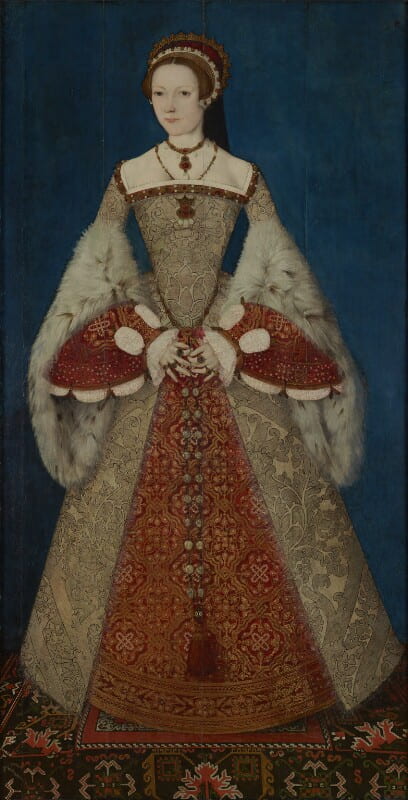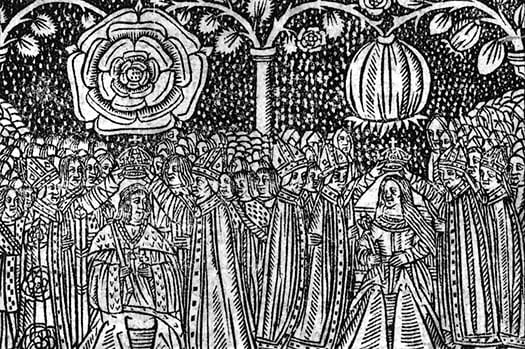By Contributing Writer Michelle L. Beer
Since the 2016 Referendum on Brexit, pundits, economists, and historians have looked for some kind of historical antecedent. They often focus on Henry VIII, who broke away from the Roman Catholic Church in the 16thcentury. The King’s break from Rome does seem like a fitting dress rehearsal for Brexit: the English (but not the Scottish) asserting their independence and sovereignty against an abstract but powerful international bureaucratic concern (the Roman Catholic Church in the 16thcentury; the EU in the 21st). It doesn’t hurt that Henry VIII is one of England’s most recognizable historical figures. In some comparisons, Henry VIII’s Reformation is mythologized as the beginning of English proto-nationhood, as a nationalist, patriotic, and populist movement. Perhaps Brexit will be as well? In others, the comparison is more dour. Bilal Hafeez of Japanese bank Namura concluded that the Reformation was disastrous for the English economy, and that Brexit by extension will be a disaster too. Most of these comparisons exaggerate the degree of control Rome had over English sovereignty and give a false sense that the sixteenth century was the beginning of an England free from Europe, thus ignoring the international nature of early modern politics and the period’s most transnational agents, the foreign queens consorts of Europe.
Pre-modern queenship offers a corrective for this Anglo-centric vision of the United Kingdom’s history and origins. Unlike a focus on royal men like Henry VIII, thinking about queens shows how international diplomacy, exchange, and even the political union of states happened in the past. During the sixteenth century throughout the British Isles and Europe a transnational court culture presented ample opportunity for women to engage and influence the power politics of the day. Queen consorts thrived in this environment. In turn, the monarchies of Europe relied on queens consort and their dynastic marriages to facilitate alliances abroad and enhance the prestige and power of the monarchy at home.
Thinking about queens in this period muddies the neat nationalist histories of the early modern state because queens—the same queens who gave birth to future kings—were usually foreigners. The dynastic marriage between two princely houses was the preferred way to seal a treaty of peace or broker new alliances. And it was royal women who dutifully set out from their homelands to marry royal men, facilitating cultural as well as political exchanges, like Margaret Tudor whose musicians introduced the English motet to Scottish composers, or Catherine of Aragon and her ladies who brought the farthingale to England from Spain. The “foreignness” of foreign brides was, in fact, a very good thing for their marital dynasties. Foreign brides came with their own set of allegiances, and these women were often at the center of multiple loyalties, incorporating their maternal and paternal dynasties into their own royal identities and political outlook (Smuts 2005).

Queen Katherine Parr wearing a gown with a farthingale, attributed to Master John
oil on panel, circa 1545. NPG 4451
Understanding this queenly history challenges notions of national identity that are often at the center of histories of centralizing monarchies. At the heart of royal government, responsible for the continuation of the dynasty, there was often a foreign queen. Because of their familial contacts, foreign queens like Catherine de Medici (wife of Henri II of France) or Marie de Guise (wife of James V of Scotland) ensured that their new kingdoms were influenced by their foreign homelands well after the wedding celebrations were over. Catherine de Medici redesigned the gardens at Fountainbleau to reflect her Florentine and papal connections, for example (Courtright 2005), while Marie de Guise maintained a large household of French servants, some of whom married and settled in Scotland permanently (Marshall 1977). Some of these women became official ambassadors for their homelands, as Catherine of Aragon did at the English courts of Henry VII and Henry VIII for her father Ferdinand of Aragon. And, if their husbands predeceased them, a foreign queen could find herself ruling as regent on behalf of her minor child, as Catherine de Medici for Charles IX or Margaret Tudor for James V. The 16thcentury was not the age of state-centered sovereignty, but of a vibrant international court culture of which women were the most mobile members.

Chateau of Fontainbleau, whose gardens and galleries were heavily influenced by two Italian queens of France, Catherine de Medici and Marie de Medici.
For the United Kingdom, the legacy of queens consort and their transnational connections is hugely significant. Henry VIII’s path to Reformation began with his desire to annul his first marriage to the Spanish Catherine of Aragon. Her superior allegiances in Europe (in particular her nephew the powerful Emperor Charles V) prevented Henry from successfully getting an annulment from the Pope. Thus, the need to break from Rome. This appears to be a clear case of European meddling in English affairs. But, when we look at the motivations behind Henry’s desire to end his first marriage, we see that dynastic politics, and not sovereignty or national well-being, was really behind the English break from Rome (e.g.Bernard 2018). Henry did not wish to annul his marriage to Catherine in order to change his foreign policy (in fact, he and his advisors desperately wanted to stay on the good side of Charles V and the wool markets he controlled in the Netherlands). Instead, Henry’s desire to change wives was based on his personal belief that his only surviving child, Princess Mary, could not inherit his throne, and that his wife could no longer bear children. (He was only half right: Princess Mary did end up inheriting a throne.)
The very of union of the kingdoms of England and Scotland, which occurred in 1603 when James VI of Scotland inherited the English throne, was only possible through the dynastic connections forged by a foreign queen generations before. For most of the fifteenth and sixteenth century, Scots had welcomed a series of well-connected, politically active foreign brides for their sovereigns. For the history of Britain, the most important of these marriages was between Margaret Tudor, eldest daughter of Henry VII, and James IV of Scotland, because Margaret would pass along her claims to the English throne to her descendants. Her great-grandson James VI would unite the Scottish and English thrones in 1603, and her descendent Queen Anne would unite the two realms in Parliamentary union. The current royal family is descended from Margaret’s, and not Henry VIII’s, branch of the Tudor family. The possibility that Margaret’s marriage in 1503 would eventually unite the two realms was certainly contemplated at the time by her father and was seen as a natural and potentially desirable outcome of the match, by peacefully bringing together two kingdoms who had fought for centuries.
Queenship, like many other aspects of power and authority in the pre-modern period, was a negotiated set of ideals, practices, rights, and rituals that varied from kingdom to kingdom but nonetheless shared a number of commonalties tied to Christian ideals of womanhood and gender roles (Earenfight 2005). As a discourse, queenship allowed royal women flexibility to shape their own reigns in dialogue with local traditions and expectations, combining them with their personal and familial concerns to create her own queenly identity. This flexibility and amalgamation of local and international concerns made queenship a dynamic, transnational phenomenon that continued in spite of the upheavals of the Reformation and Counter-Reformation in the sixteenth and seventeenth centuries. The kingdoms of Britain participated in this discourse as well, even after the break with Rome. English and Scottish monarchs continued to marry foreign women in order to secure alliances and further their dynastic and political policies, with admittedly mixed results. Until the twentieth century, marriage between royal houses was still considered a strong method of fostering international cooperation between nations, and the United Kingdom continued to benefit, sometimes quite directly, from transnational queenship. The current branch of the royal family owes their position to a foreign match between Elizabeth, daughter of James I, and Frederick V of the Palatinate.

16th century woodcut showing the coronation of Henry VIII and Catherine of Aragon (From Stephen Hawes, A Joyfull Medytacvon to All Englande(1509), printed Wynkyn de Worde, 4to, n.d. (Cambridge University Library)
The simplistic deployment of Tudor history in Brexit debates is a warning to historians not to let these narrowly-focused historical narratives go unchallenged in the public sphere. Bringing queenship into the history of early modern monarchies, and the English monarchy in particular, provides new ways of understanding the past and the relationship between states that provides a compelling alternative an Anglo-centric narrative. By reassessing what monarchy looked like during the early modern period, transnational histories of queens show that the history of the kingdoms of the British Isles have always been intertwined with other nations. By acknowledging the important place of women in early modern politics, historians can offer a more nuanced and ultimately inclusive history of Europe.




1 Pingback